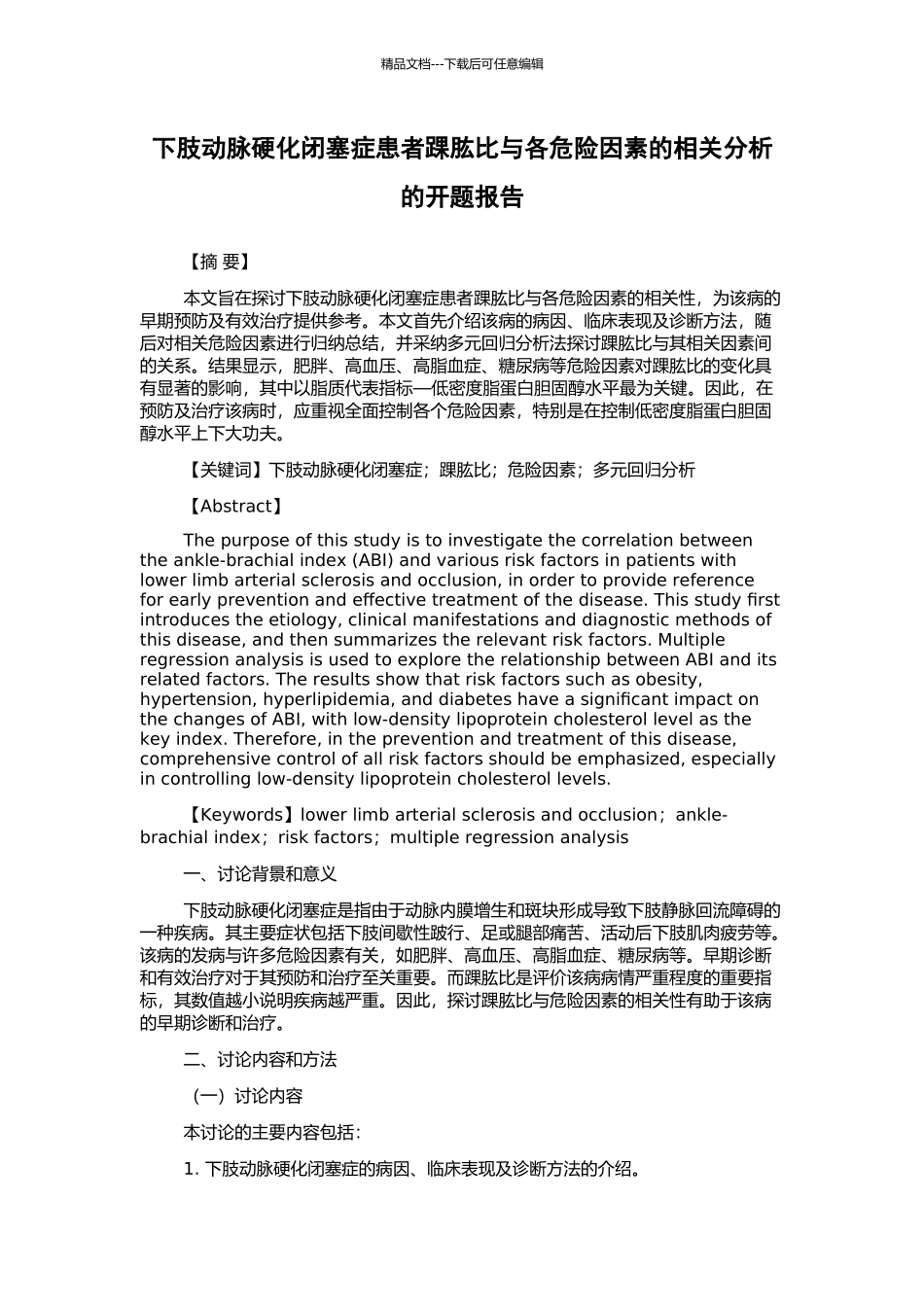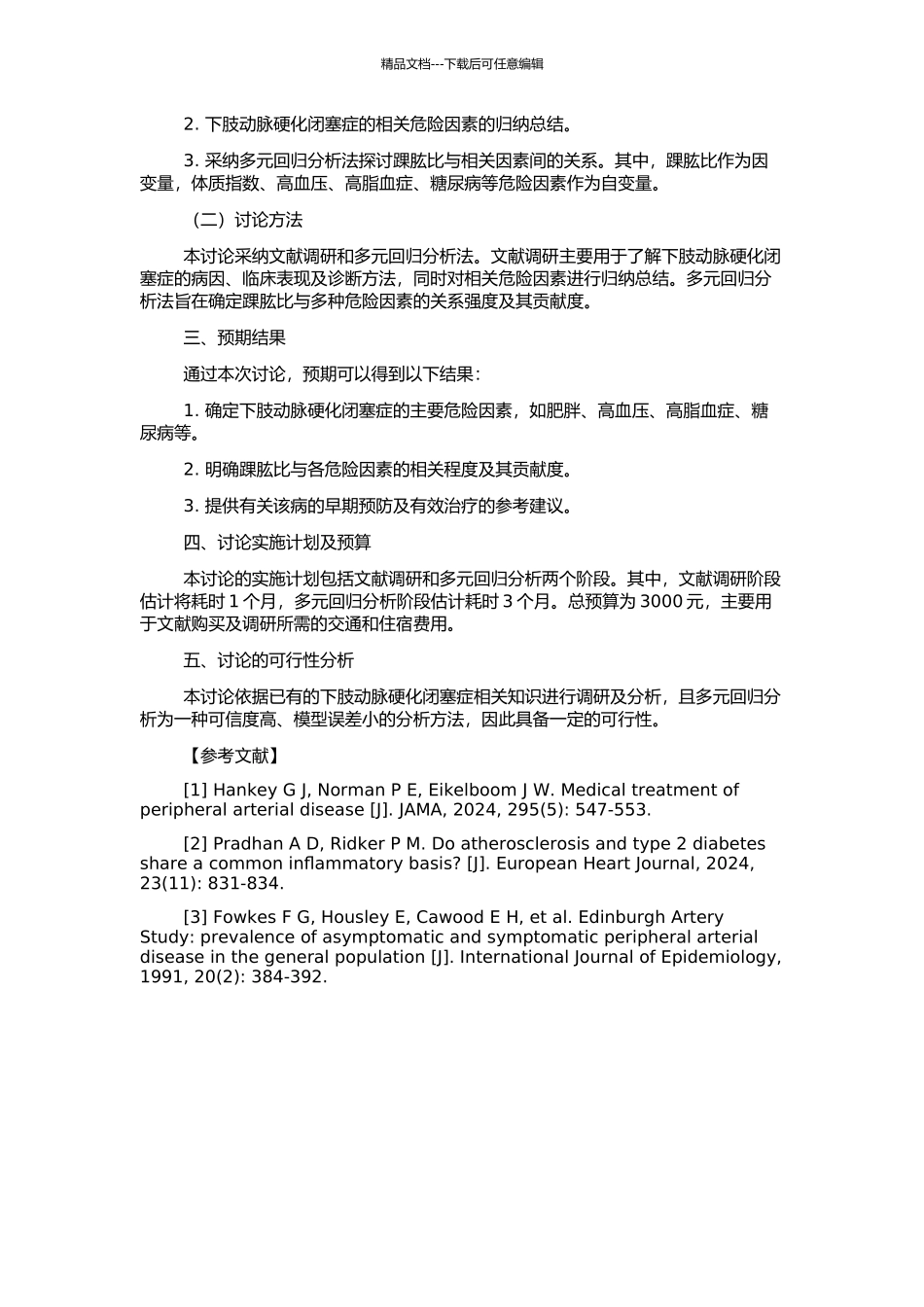精品文档---下载后可任意编辑下肢动脉硬化闭塞症患者踝肱比与各危险因素的相关分析的开题报告【摘 要】本文旨在探讨下肢动脉硬化闭塞症患者踝肱比与各危险因素的相关性,为该病的早期预防及有效治疗提供参考。本文首先介绍该病的病因、临床表现及诊断方法,随后对相关危险因素进行归纳总结,并采纳多元回归分析法探讨踝肱比与其相关因素间的关系。结果显示,肥胖、高血压、高脂血症、糖尿病等危险因素对踝肱比的变化具有显著的影响,其中以脂质代表指标—低密度脂蛋白胆固醇水平最为关键。因此,在预防及治疗该病时,应重视全面控制各个危险因素,特别是在控制低密度脂蛋白胆固醇水平上下大功夫。【关键词】下肢动脉硬化闭塞症;踝肱比;危险因素;多元回归分析【Abstract】The purpose of this study is to investigate the correlation between the ankle-brachial index (ABI) and various risk factors in patients with lower limb arterial sclerosis and occlusion, in order to provide reference for early prevention and effective treatment of the disease. This study first introduces the etiology, clinical manifestations and diagnostic methods of this disease, and then summarizes the relevant risk factors. Multiple regression analysis is used to explore the relationship between ABI and its related factors. The results show that risk factors such as obesity, hypertension, hyperlipidemia, and diabetes have a significant impact on the changes of ABI, with low-density lipoprotein cholesterol level as the key index. Therefore, in the prevention and treatment of this disease, comprehensive control of all risk factors should be emphasized, especially in controlling low-density lipoprotein cholesterol levels.【Keywords】lower limb arterial sclerosis and occlusion;ankle-brachial index;risk factors;multiple regression analysis一、讨论背景和意义下肢动脉硬化闭塞症是指由于动脉内膜增生和斑块形成导致下肢静脉回流障碍的一种疾病。其主要症状包括下肢间歇性跛行、足或腿部痛苦、活动后下肢肌肉疲劳等。该病的发...

